Walkabout with Montrose: A Crown Heights Tale
In 1864, George B. Elkins stood on the wide porch of his Greek Revival/Italianate villa on a newly minted Dean Street, and looked across the rocky fields, scattered woodlands, and sparsely settled acreage that stretched before him.

Photo by Suzanne Spellen
In 1864, George B. Elkins stood on the wide porch of his Greek Revival/Italianate villa on a newly minted Dean Street, and looked across the rocky fields, scattered woodlands, and sparsely settled acreage that stretched before him. Like any good New Yorker, he knew what he was really looking at
MONEY! The street grid had been laid out, and a few wooden houses and suburban villas stood, but the area was still largely pastoral.
His property, which had been bought by his wife, Susan, in 1859, stretched along Dean Street from Pacific almost to Kingston, and the previous owner had built one of the first homes around on this huge sold off parcel of the old Lefferts farm property.

The Lefferts homestead itself was only a mile away, and that family had originally owned most of central Brooklyn.
The Elkins family, including his four daughters, moved to the Dean St. house from Brooklyn Heights, and the house was probably already standing when they purchased the farm.
We do know it was a farm, as George posted an ad in the Brooklyn Daily Eagle in 1868, offering two beautiful fresh cows for sale.
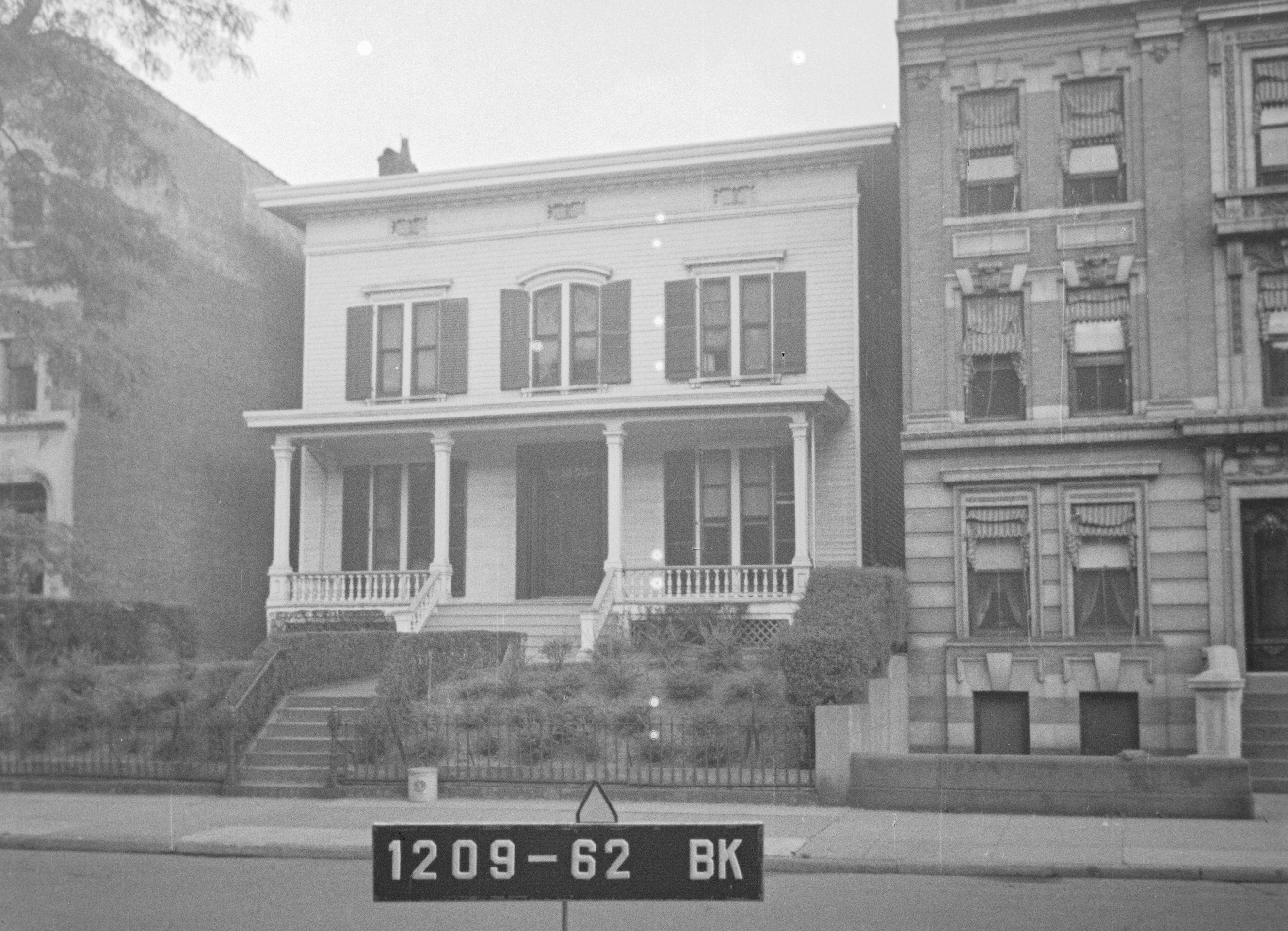
George started out as a merchant, but by his move to Dean Street, he was selling real estate, and he was a born salesman. Between 1863 and 1875, he posted literally hundreds of ads in the Eagle, advertising properties and lots in this northwestern corner of the town of Bedford.
His office was on the corner of Fulton and Clermont, but he did much of his business right on his front porch, showing potential customers the vistas that stretched before them, and the possibilities for the good life that were readily available to those with vision.
He was very successful, and sold properties large and small, homes and development sites, cheap lots and mansion acreage. By 1870, he had branched out into contracting, and was hired to build part of Eastern Parkway, and later, much of nearby Brooklyn Avenue.
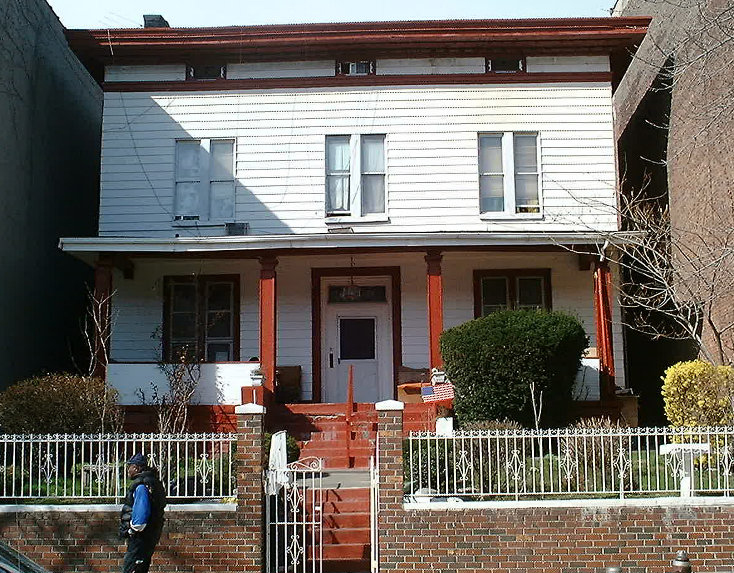
He was a gentleman pretty well known in the city, according to the Eagle, and enjoyed many successful years in the real estate trade. During this time, the entire area was becoming known as the St. Marks District, and more and more was becoming home to New York’s weathy who wished a quieter suburban life.
Unfortunately, nothing lasts forever, and by the 1880’s, George was experiencing hard times.
His wife, Susan, died in 1883, and soon after, George bought some property near the Penitentiary south of Eastern Parkway that he couldn’t carry, and he went bankrupt, along with many other speculators during this particular economic crash.
He died poor (the Eagle) in 1888, and much of his holdings were sold off to pay off his debts. The four daughters, none of whom ever married, stayed in the house.
In the 1890’s they started selling the lots adjacent to their home, and although they had stipulations in the sales agreements that the land would not be overdeveloped, by the turn of the century, their house was completely surrounded by buildings.
In 1918, the surviving three daughters sold the house, and it has passed through many hands since then. Its last use was as a rooming house.
The Elkins house is now the oldest free standing wooden house in Crown Heights North, and now sits in the center of the block, surrounded by row houses and apartment buildings.
Even though it was included the then-calendared Crown Heights North Historic District, by 2006, it was almost demolished, and was literally saved from the bulldozer by being declared an individual landmark that year. Unfortunately, in spite of being on the market since then, it has not found an owner, and is now boarded up and in danger of being neglected to death.
The house may not look like much, especially now, and never was a fancy or ornate High Victorian palace, but it is important for both its age and uniqueness, and for its role in the development of Brooklyn.
The Elkins family played a notable part in the history of the city; aside from George, two of the daughters were teachers and patented inventors, and the house itself is the only surviving reminder of Crown Heights’ pre-suburban development.
From its high porch, well above the street level, it’s easy to be reminded of a day when one could stand on the porch and see farmland, suburban villas, developing streets, and stagecoaches racing down nearby Fulton Street.
The Crown Heights North annual house tour takes place this Saturday, October 3rd, from 12-5. Tickets are $20 in advance, $25 at the door.
The self guided tour starts at St. Gregory’s RC Church, 991 St. Johns Place, at Brooklyn Ave, near the 3 train at Nostrand Ave. We’ve got 9 homes, and 2 churches, with stops at non-profits, a garden and museums on deck, and houses ranging from period perfect gems to condos with 21st century technology.
Please join us! It is our fervent wish that the Elkins house can be saved and someday be a part of our tour. Take a side trip to 1375 Dean Street, between Brooklyn and Kingston Ave, and check it out.
It will be a lot of work and money, but rescuing a unique piece of history is a noble pursuit. George and Susan Elkins would definitely approve. Here are some neighborhood highlights…..

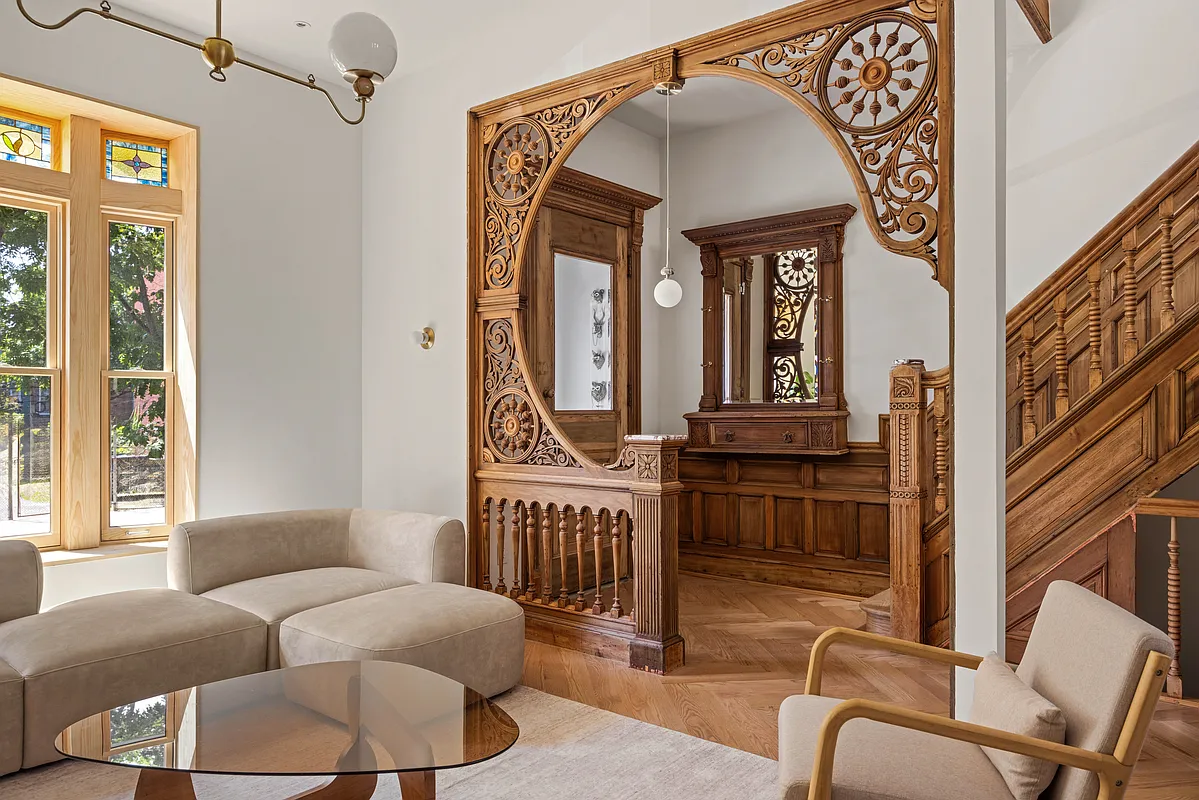
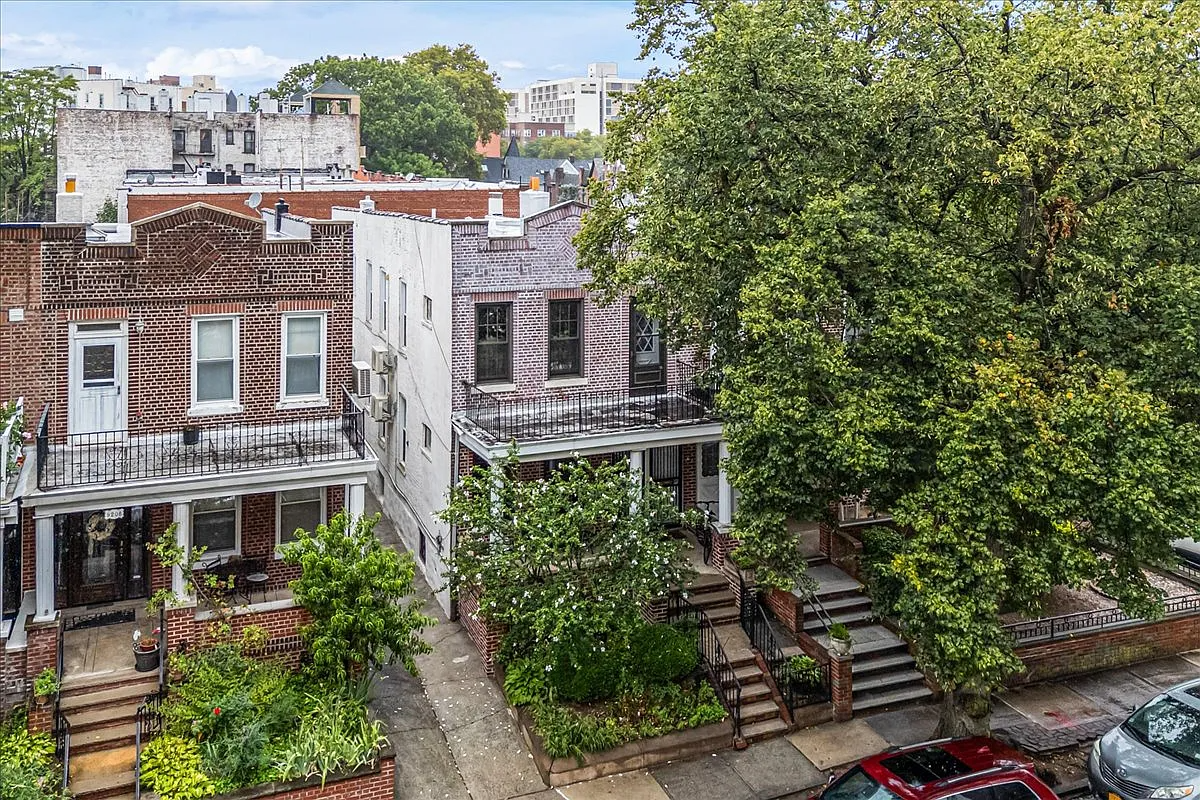
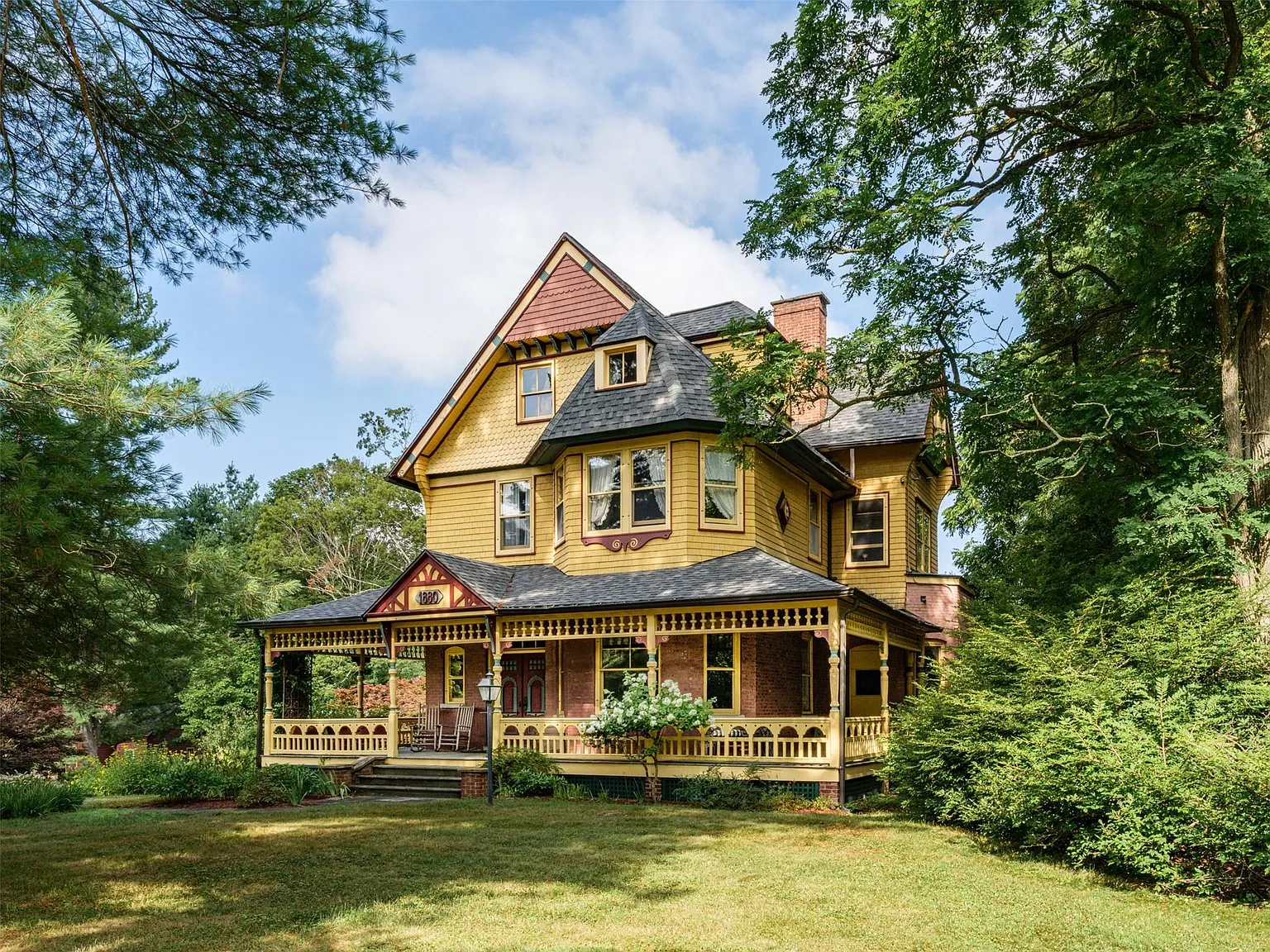
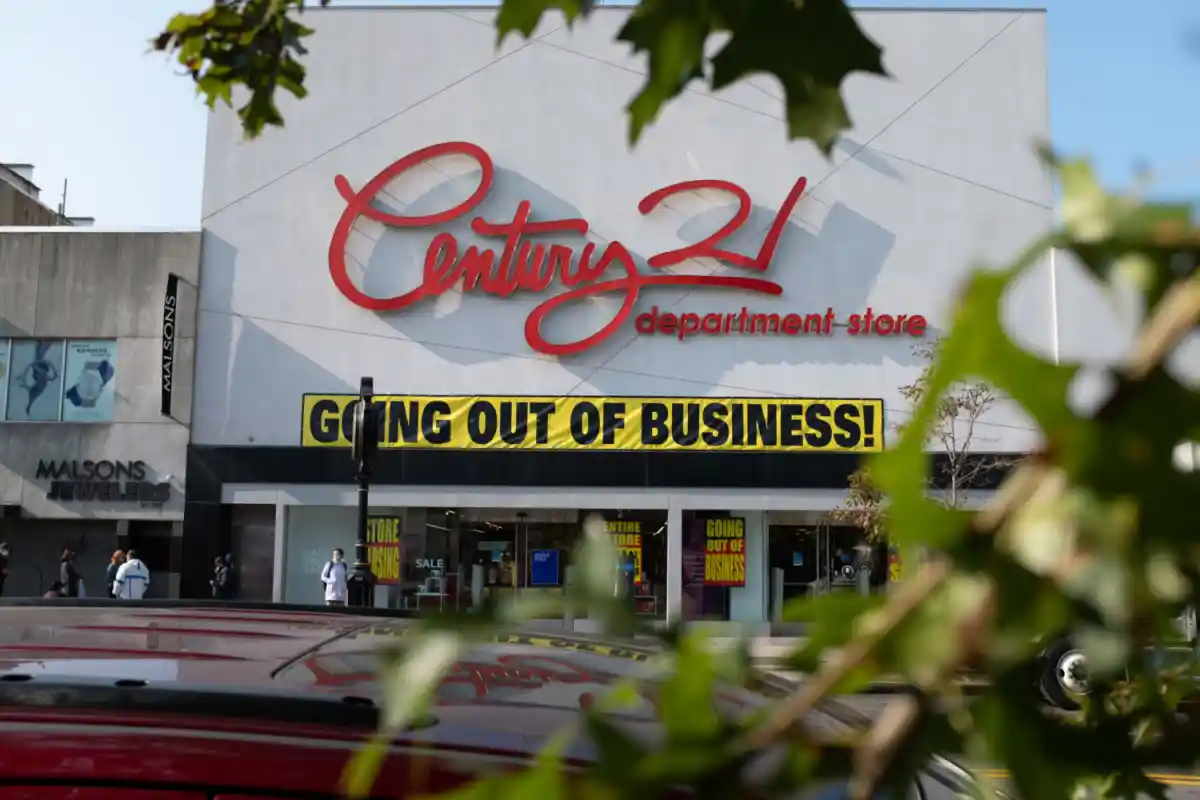
Oh ok, sorry for missing that part 🙂
MM, a great read, as always. The Dean Sage House looks very familiar – did we see it on our Crown Heights Walking Tour last month?
BrookLynn, I’m sorry if I was unclear. This house is NOT on the house tour.
The house tour is a whole ‘nother animal, which I unabashedly tied into a Crown Heights story. The tour wouldn’t even really take you by this block, unless one went completely off the path to see it. However, you never know who is interested in what, so I invite any interested parties to go on the house tour, and also wander around the neighborhood, and see all there is to see.
The House tour is a good ideam maybe someone will buy it, as it is a lot of house. I’m however actually surprised they agreed to a tour, as there are safety issues, ie. no bannister on one side of the stairs, unless they actually added on, which I doubt.
If you don’t mind me asking, how did you get them to agree?
You would think that the city of New York historical society would try to buy this house. Or this house would be a great meeting house for Crown Heights. I hate to see such an old house sit here in the shape it is in… I would love to see the interior of this house…. Great job Montrose.
” Brooklyn is wondrous strange.”
Montrose;
Yes, on that we can agree! 😉
I remember that even when I was a kid in the early 1960’s, there were some truck farms in developed areas of Brooklyn. In fact, there was one 1.5 blocks from me. By the late 60’s it was gone, as an apartment building was constructed on the site.
The best hope for this house is for a local developer/builder to buy it and restore it for resale as a private residence (not necessarily single family). While the restoration is going forward, it can be placed on the National Register and the owner can donate a preservation easement to a qualified group (like the landmarks conservancy) and take a large income tax credit.
non-profits are all struggling right now. The private sector is the answer here.
Benson, it could be the far reaches of CH, near ENY. I’ve seen a tax photo of Bergen St, near Eastern Parkway, showing a frame house with a goat in the yard, taken in the 30’s. There are parts of Brooklyn and Queens that looked like that up until very recently, if not still. Remember that post recently about the part of ENY off the Conduit that looked like Alabama in 1930? Brooklyn is wondrous strange.
Hi Montrose,
I’m not surprise this property has not sold. I, as you know put an offer on this home as my husband and I would have loved to have it. It was in very bad shape when we did a walk through but it could be absolutely beautiful once restored and it’s huge.
The problem is, the buyer paid so much for the home to try and rip it down to put up condos but when it was landmarked, that soured the deal for them. Since they didn’t want it as anything more then a tear down and rebuild, they have no interest in fixing it up or securing it for that matter. If the house wasn’t in such bad shape the asking price wouldn’t have been so bad for that size of a lot. But it would take so much money to put it back together and we were approved for a 203k loan.
It’s really sad